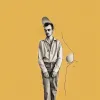Found Sound: Listening to the World as Music
In a world saturated with pre-produced beats, over polished vocals, and synthesized melodies, the “Found Sound” exercise breathes fresh air into music composition and production. This unique approach to music-making involves harnessing raw, natural, and sometimes unexpected sounds from the environment and moulding them into intricate soundscapes or melodies.
A Glimpse into the Past: John Cage
The concept of listening to the world around you as music isn't entirely novel. Its roots can be traced back to innovative composers like John Cage. Often seen as the godfather of the avant-garde, Cage's experimental approach towards music often delved deep into the realm of what many would not traditionally consider “music”. His piece “4'33”, where a pianist sits silently at a piano for exactly four minutes and thirty-three seconds, challenges our very notions of what music is, inviting us to listen to the ambient sounds in our surroundings as the composition itself. Coughs and the creaks of the audience members adjusting their seating positions all start to harmonize into a delicious real-time composition.
The Allure of Sound Collages
“Found Sound” borrows from this philosophy and has been embraced by various musicians over the decades. These artists act as aural curators, capturing the essence of different places, times, or feelings using found sounds. Such compositions, often described as 'sound collages,' are a mosaic of raw, unfiltered acoustic moments.
From the rustling of leaves to the distant hum of a city, the ticking of an old clock, or the cacophony of a bustling market. These sounds provide a rich palette from which an artist can paint a vivid sonic picture. Each sound clip, no matter how mundane, holds its narrative, an encapsulated moment in time, and when woven together, they tell a story, emit an emotion, or paint a scene.
The World Around You, A Symphony in Disguise
Imagine walking through a forest and hearing the percussive patter of rain on leaves, the wind's melodic whispers, and the deep bass rumbles of distant thunder. Or consider the rhythmic clatter of a train, punctuated by the shrill whistle at every station. Each of these scenarios holds a symphony of its own, waiting to be discovered, sampled, and rearranged.
Participating in the “Found Sound” exercise encourages not just musicians, but everyone, to change the way we perceive our auditory surroundings. It’s an opportunity to pause and listen, to find rhythm in the chaos, and to appreciate the serendipitous harmonies that nature and urban environments provide. It shifts the paradigm of music production from creating sounds to discovering them.
Weaving Your “Found Sound” Sonic Tapestry
1. Become an Eavesdropper: Walk around your city, your home, a park. Let your ears be your guide, finding those unique sonic moments.
2. Capture the Moment: With the help of modern recording devices or even your smartphone, record snippets of sound that pique your interest.
3. Weave the Tapestry: Integrate these samples into your music. Let the chirping birds be your backing vocals, the city's hustle your rhythm section.
4. Embellish and Enhance: Using digital software or instruments, enrich these sounds, crafting them into a cohesive musical piece.
5. Reflect and Revel: Play back your creation. Relish the art born from amalgamating the everyday with your musical essence.
The Serenades of Found Sound
- Uncharted Sonic Territory: Break free from traditional music confines, discovering new textures and tonalities.
- A Connection to the World: By integrating daily sounds, your music becomes an ode to life’s nuances, resonating with listeners on a profound level.
- Innovation's Playground: Push your creative boundaries, experimenting with sounds that may have previously been overlooked.
The “Found Sound” exercise is more than just an avant-garde music technique; it's a philosophy, an invitation to listen more deeply and appreciate the melodies that life spontaneously composes around us every day. Whether you're a seasoned musician or someone looking for a fresh perspective on the world, diving into the realm of sound collages can be a transformative experience. In a sense, it's a reminder that the world itself is an orchestra, with every sound a note, and every day a unique composition.

